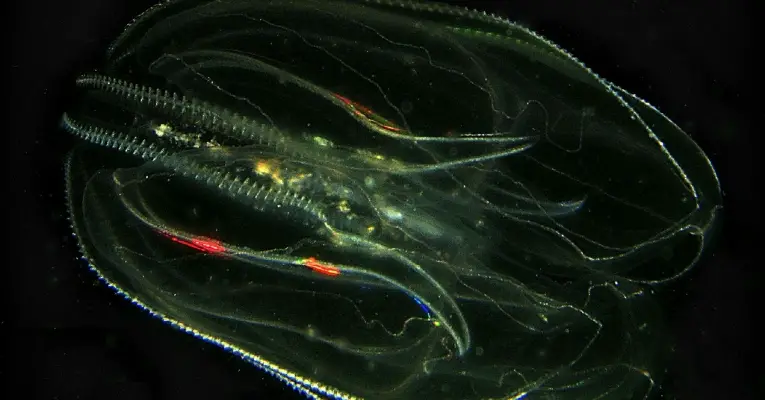Animals
Jellyfish-Like Creature Discovered With “Transient Anus” (or Disappearing Butthole)

Have you ever taken a big poop and thought to yourself—I don’t really need my anus right now, I wish it would just disappear. No? Neither have we.
But for the Mnemiopsis leidyi (or warty comb jellies), such is their daily reality–whenever they need to defecate, their anus materializes before vanishing as soon as they’ve released solids.
Scientists say this is the first-ever discovery of a “transient anus” in the natural world, according to an article published by New Scientist.
And unlike regular jellyfish with their run-of-the-mill 24/7 anal opening and digestive system, these sea creatures have a simple anal pore that releases digested food once the gut has filled to capacity.
The discovery was made by Sidney Tamm of the Marine Biological Laboratory in Woods Hole, Massachusetts, who told New Scientist:
“That is the really spectacular finding here … There is no documentation of a transient anus in any other animals that I know of.”
The biologist knew something was strange when observing the wary comb jellies gobbling up tiny crustaceans and baby fish. While the creature had a mouth, or entrance, it seemed to lack an exit–it simply lacked an anus.
Yet as Tamm observed the creatures, he noticed that when it did need to defecate, a small anus would suddenly appear and once it was done releasing excrement, the anus disappeared just as suddenly.
It’s a radically different digestive process than the rather straightforward one enjoyed by other jellyfish and comb jellies, which have one gut connected to one opening–which serves as both the mouth and the anus.
Tamm noted:
“It is not visible when the animal is not pooping … There’s no trace under the microscope. It’s invisible to me.”
And as it turns out, the anus simply doesn’t exist until it’s needed–it’s simply not a fixed feature of the creature’s physical anatomy.
Instead, waste accumulates in the gut of M. leidyi until the gut expands outward, coming into contact with the epidermis. At that stage, the gut fuses with the epidermis and an anal opening quickly forms. After the waste has been expelled, the opening shuts and then vanishes.
Mature warty combs grow a new anus approximately once every hour, while larvae do it far more quickly at a rate of about once every 10 minutes.
The jellyfish-like creature, also known as a sea walnut, belongs to a group of invertebrate marine creatures known as ctenophores, which descended from ancestors 525 million years ago, during the Cambrian period.
With such an ancient lineage, the animal potentially offers a living guide to the early evolution of animal digestive systems and the birth of the permanent anus in animals such as humans, or a lack thereof in the case of animals like jellyfish.
But in the meantime, social media users are brimming with laughs and puns over the discovery of the “transient anus.”
The jellyfish-like creature with a "transient anus"
Typos, corrections and/or news tips? Email us at Contact@TheMindUnleashed.com
